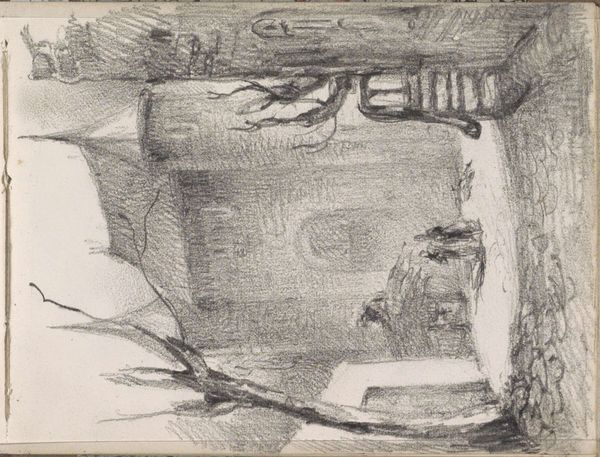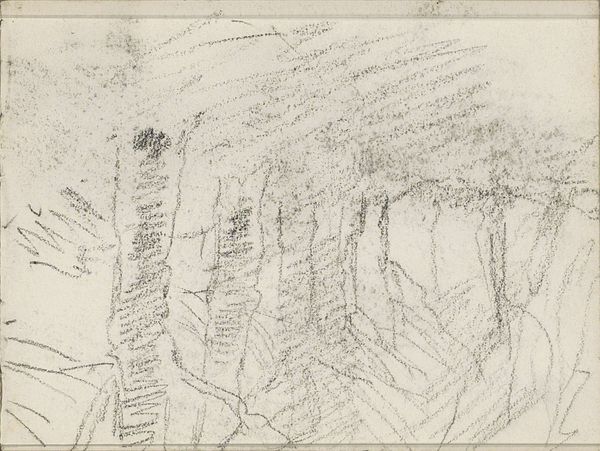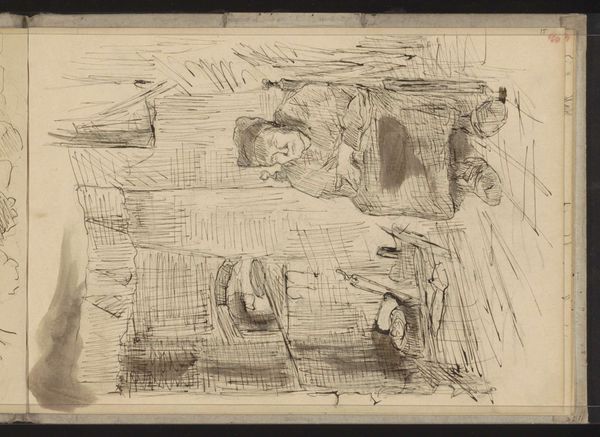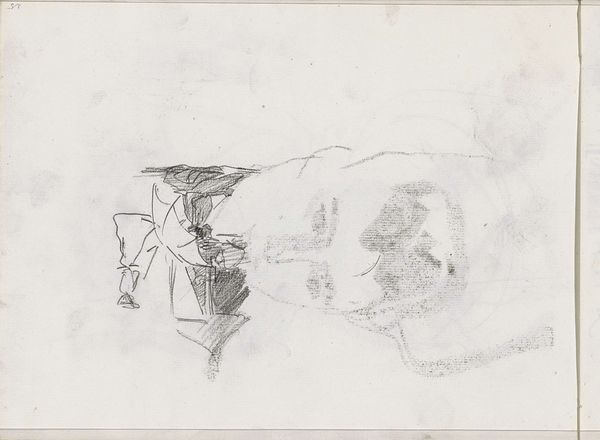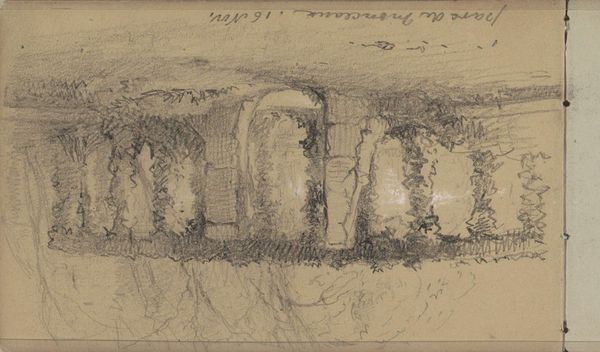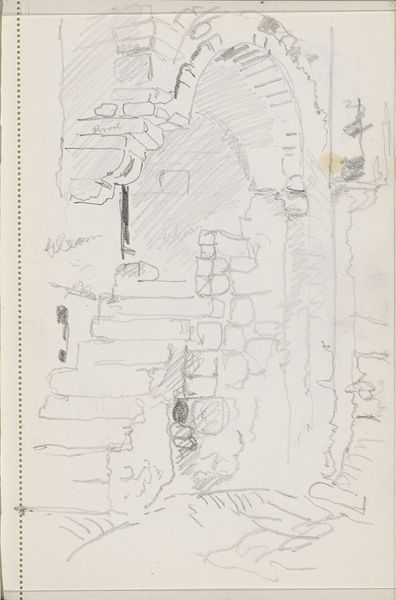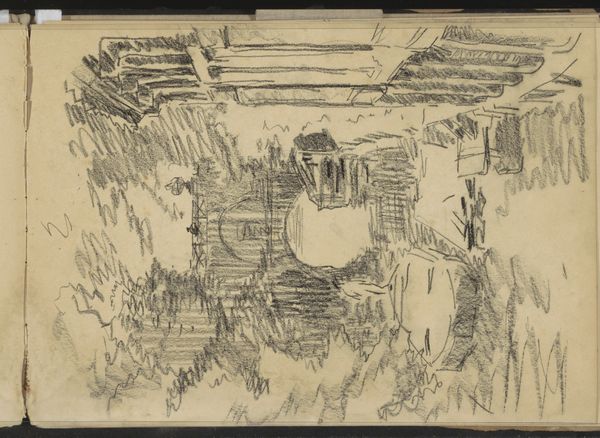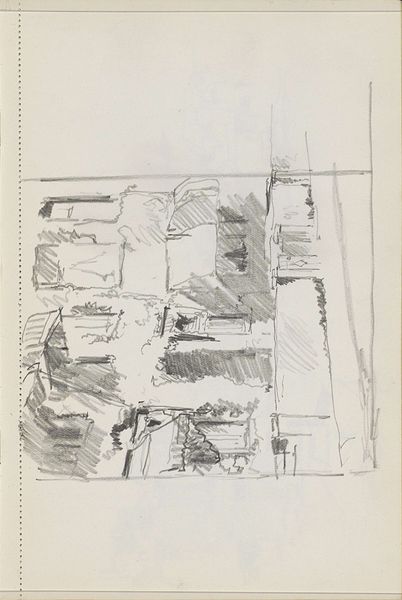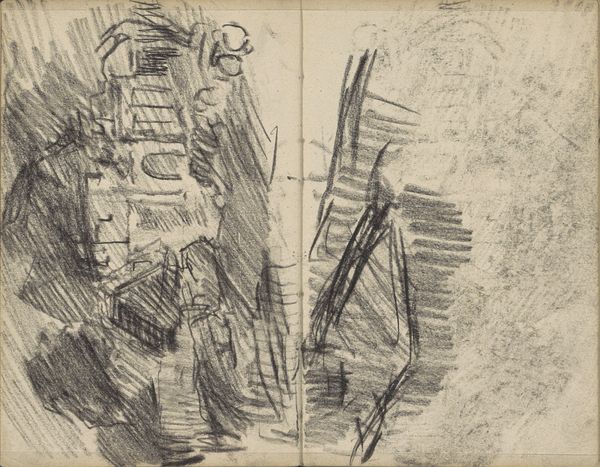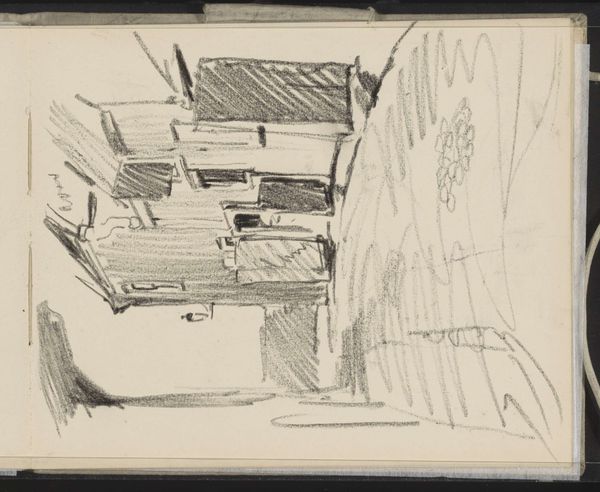
drawing, pencil
#
drawing
#
amateur sketch
#
toned paper
#
light pencil work
#
pen sketch
#
landscape
#
form
#
personal sketchbook
#
ink drawing experimentation
#
pen-ink sketch
#
pencil
#
line
#
pen work
#
sketchbook drawing
#
sketchbook art
#
realism
Copyright: Rijks Museum: Open Domain
Curator: Here we have a drawing titled "Stenen Poort en Muur," which translates to "Stone Gate and Wall," attributed to Maria Vos and created sometime between 1834 and 1906. It is currently held here at the Rijksmuseum. Editor: It strikes me as very tentative, a collection of scribbled lines that barely manage to cohere into the shapes they are supposed to represent. There's an almost childlike simplicity to it. Curator: Indeed. It’s very much in the style of a preliminary sketch, possibly from a sketchbook. Notice the tonal variations achieved through light pencil and ink work, which suggests Vos was experimenting with depth and form, using line work predominantly to describe her subjects. The themes she was interested in are clearly evident here. Editor: To my eye, the stone gate suggests themes of access and obstruction, of division, really. Gates have been powerful symbols throughout human history and civilization. Here, though, the lack of finish detracts from the gate's more symbolic implications, it reads as form more than function. Curator: Perhaps the artist’s own position in society has shaped this imagery. Was Vos making a commentary? The institutional framework often relegated women artists to more domestic or amateur spheres, potentially influencing the subject matter and style, giving an insight in this work. Editor: That's an interesting idea, I do see echoes of art from amateur sketchbooks here, those places where a young, enthusiastic person attempts to imitate real master artists without understanding yet how their effects are achieved. The symbolism in the marks here is very different than in work produced from someone confident of a commission, or secure within the academy. Curator: Considering her status, the 'unfinished' aspect takes on a different significance. It speaks to the limitations placed on female artists, but simultaneously, this piece possesses an immediate, almost unfiltered perspective of observation of form and function, that is so very intimate. It transcends beyond constraints into an intriguing, possibly political perspective. Editor: Well, now I see more in it than a simple amateur rendering of an old wall. The artist has given us access to her method and through that her symbolic approach. Curator: Precisely, and this seemingly casual sketch opens a broader window into understanding 19th-century art production and society at large, reflecting how access and imagery played crucial roles. Editor: I am looking at the wall, really looking, not at Maria Vos. I hadn’t anticipated where we would go with this simple work.
Comments
No comments
Be the first to comment and join the conversation on the ultimate creative platform.
